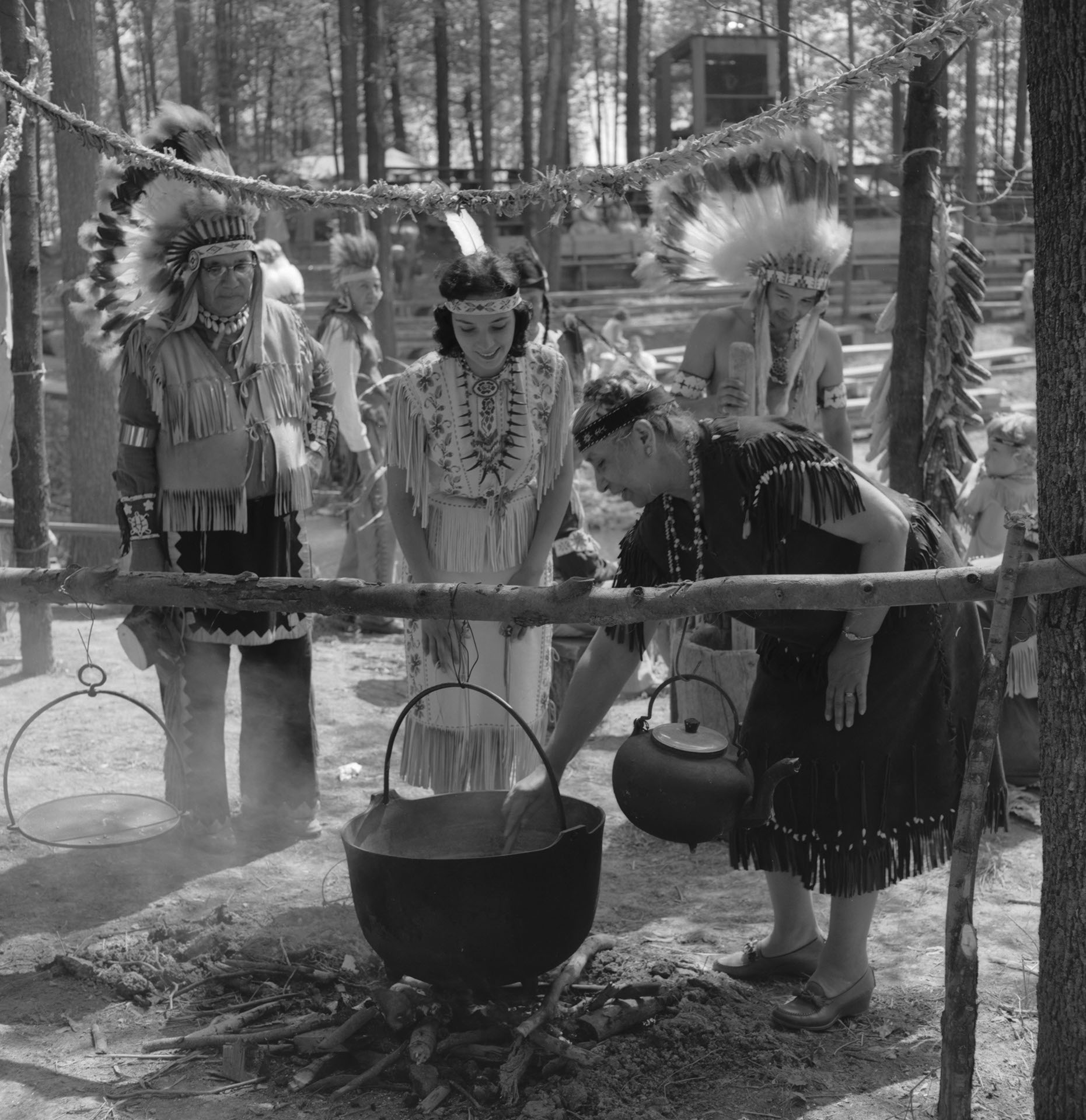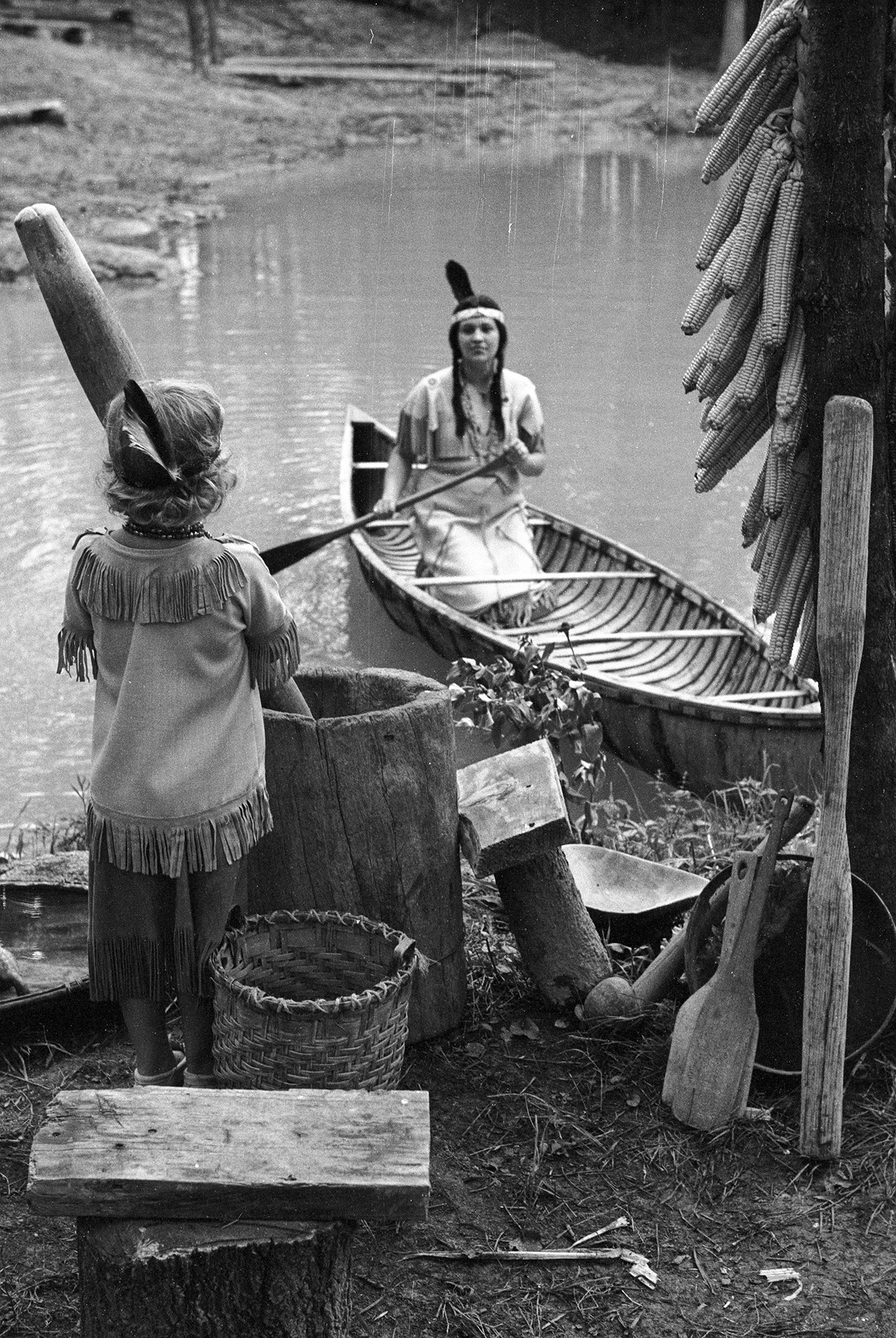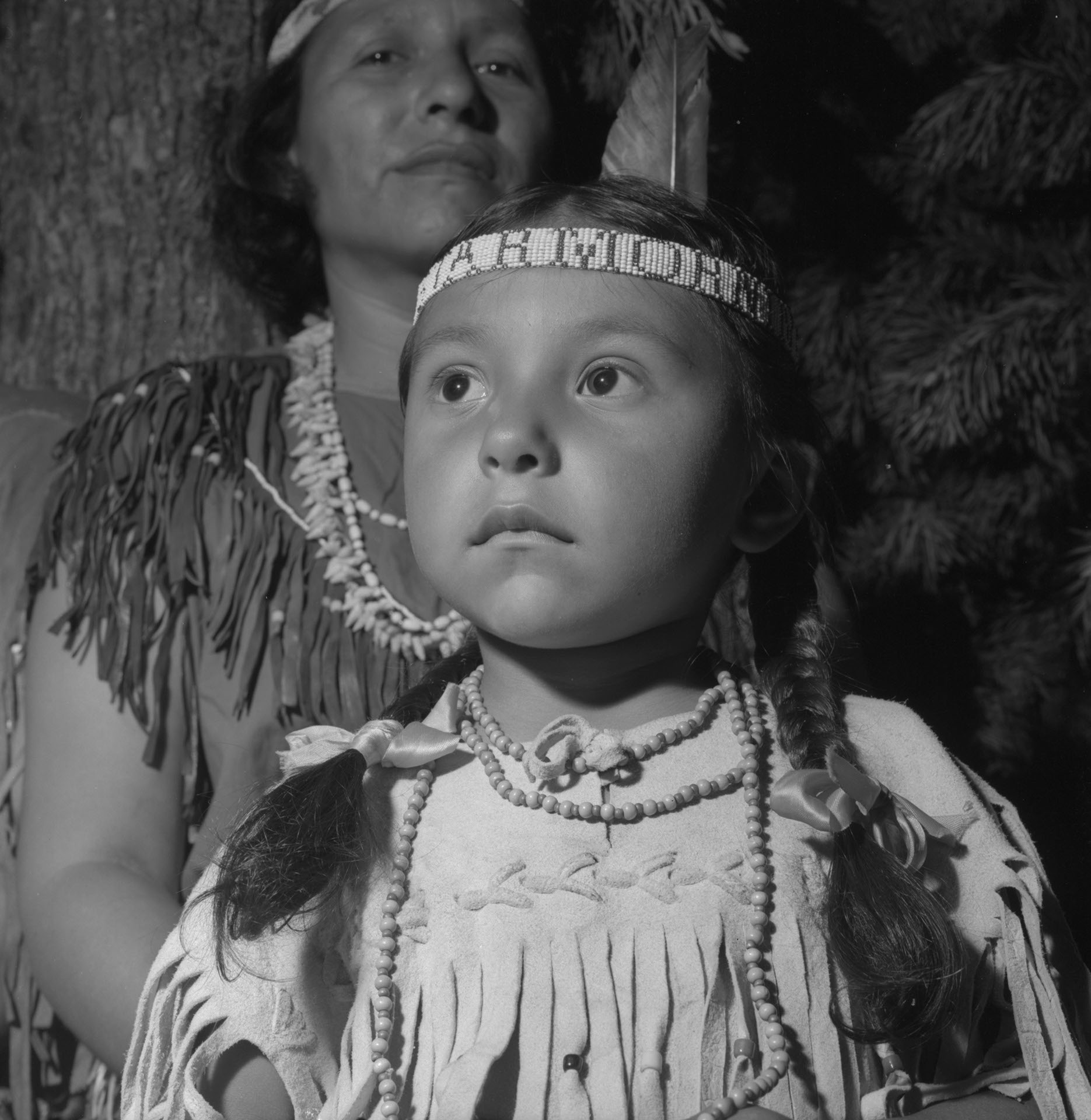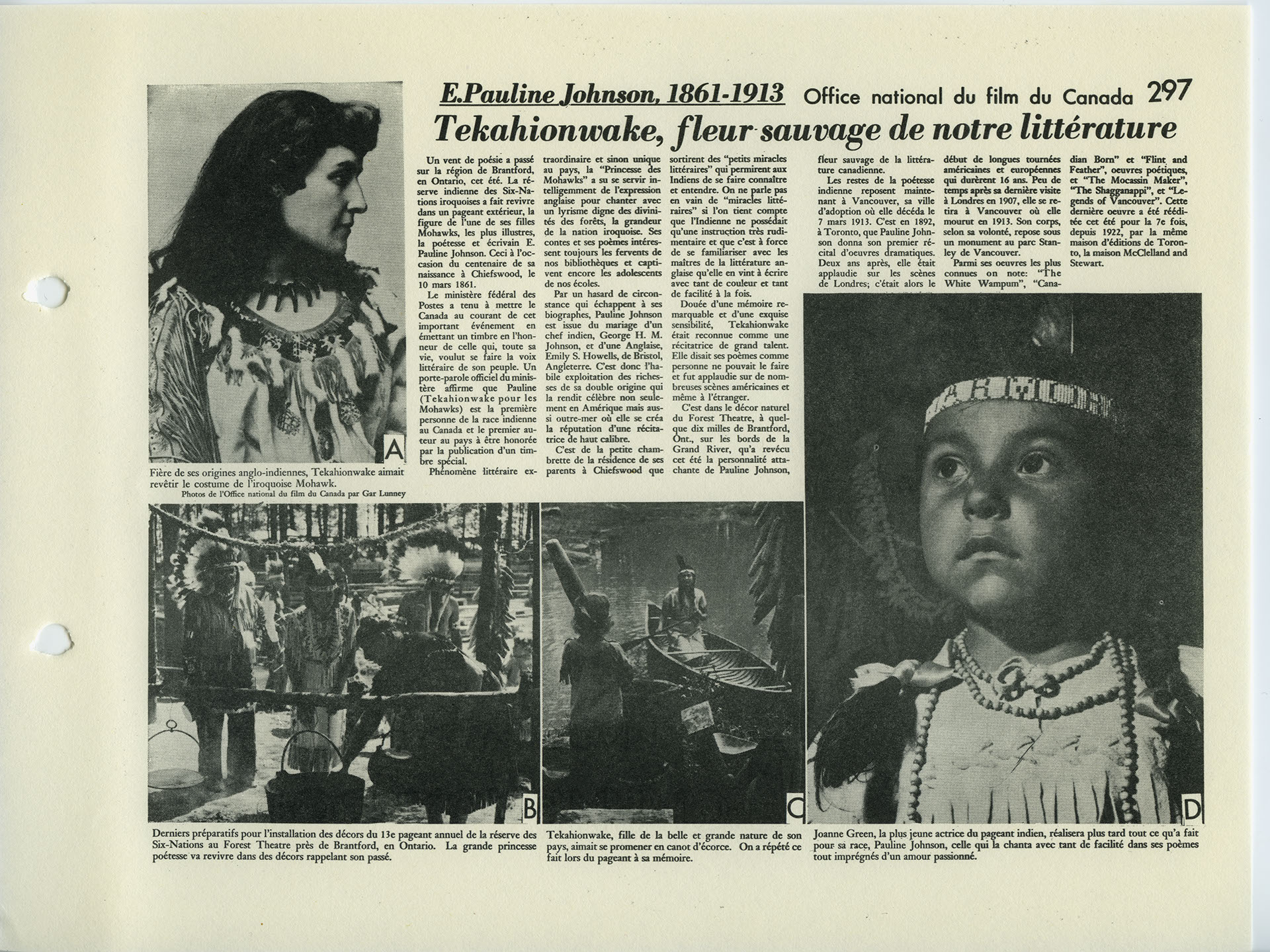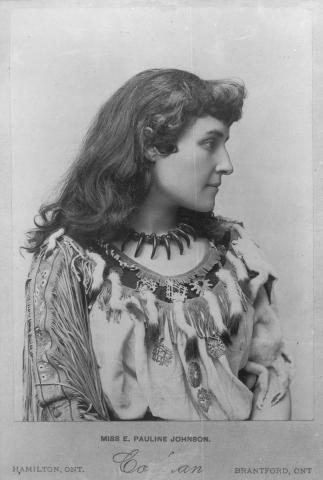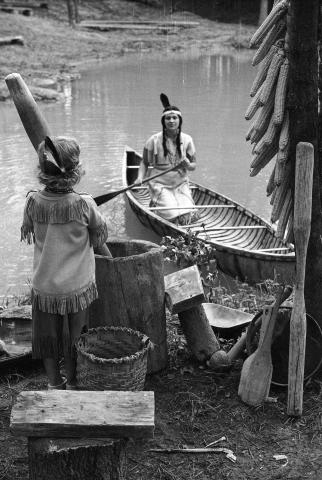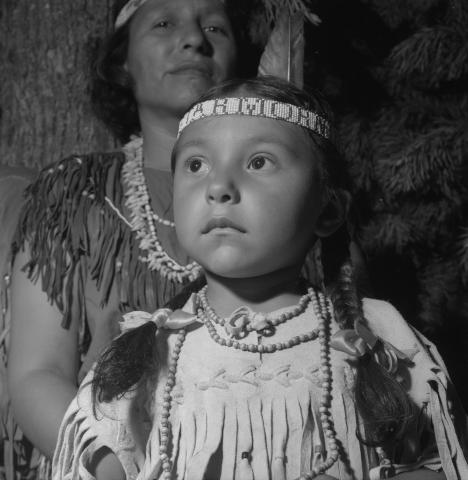
Photostory #297: Canada Celebrates Centennial of E. Pauline Johnson, 1861-1913: "Tekahionwake" Poetic Princess of the Mohawks
Photographers
,
Maker
National Film Board of Canada
Release Date
October 31, 1961
Collection
CMCP fonds
Credit Line
Canadian Museum of Contemporary Photography fonds, National Gallery of Canada Library and Archives
Main Text
Tekahionwake to the Iroquois Indians, E. Pauline Johnson to the English, golden poetess to all Canada, this wild forest flower who inherited a double culture from the white and red races and devouted most of her life to the honor of the redman, this year was in turn honored by the country of her birth. In March, Pauline Johnson Week was marked by the issue of a special Canadian stamp commemorating her birth a century ago. In August, the thirteenth annual festival of the Six Nations Reserve near Brantford, Ontario, -- a yearly pageant of colorful folklore -- took as its theme her life and work. Pauline Johnson, champion of Canadian Indians, was the youngest of four children born to Head Chief G. H. M. Johnson and his English wife, Emily S. Howells. From her father she inherited Mohawk "Blood Royal", the Indian flair for oratory and direct lineage from one of the five great chiefs of the tribes banded together, some say, by Hiawatha 400 years ago. From her mother's family she received a gift for writing. This blend of cultures had a natural sequel in her poetic storytelling of nineteenth-century Canada. The fusion of ancestry from an English literary family and a line of Red Indian chiefs enabled Pauline Johnson to be at home both in the formal drawing rooms of Edwardian London or gliding down a wilderness stream in a birch-bark canoe, at peace with the spirits of her ancestors lurking in the darkness of the forest's edge. Pauline Johnson began writing poetry at the age of 12 but offered none of her writings for publication until after her schooldays. Her first poems appeared in New York and Toronto, to be followed by many other publications in Canada, United States and England. For 16 years she made recital tours, fascinating her audiences with dramatic presentations of her work. Soon after her last visit to England in 1907, with failing health, she settled in Vancouver near her friends and the coastal Indians. Here, between the blue waters of the Pacific and the giant cedar and fir forests of British Columbia, she passed the remaining years of her life. In Vancouver her friends formed a trust to publish her work. It is reported that several of her love poems -- considered too intimate for the public eye -- were omitted. This facet of Pauline Johnson's life intrigues many of her readers charmed by the poignant passion and pathos of her writings on love. For, despite newspaper announcements of her engagement to Charles E. Drayton of Winnipeg in 1898, the answer as to why she never married has not been found. Her published works not only assure Pauline Johnson a place in Canadian literature as the first English-language Indian poet but are valued for the rippling melody and harsh reality of the tales they tell. The bravery of her Iroquois brethren, the savagery of the Hurons, the myths and legends of the Pacific-coast tribes, the white settlers and their trials -- all these came as living ink to the inspired pen of E. Pauline Johnson. Few better illustrations of her poetic imagery can be found than this verse from Dawendine: There's a spirit on the river, there's a ghost upon the shore, And they sing of love and loving through the starlight evermore, As they steal amid the silence, And the shadows of the shore.
Subjects:

